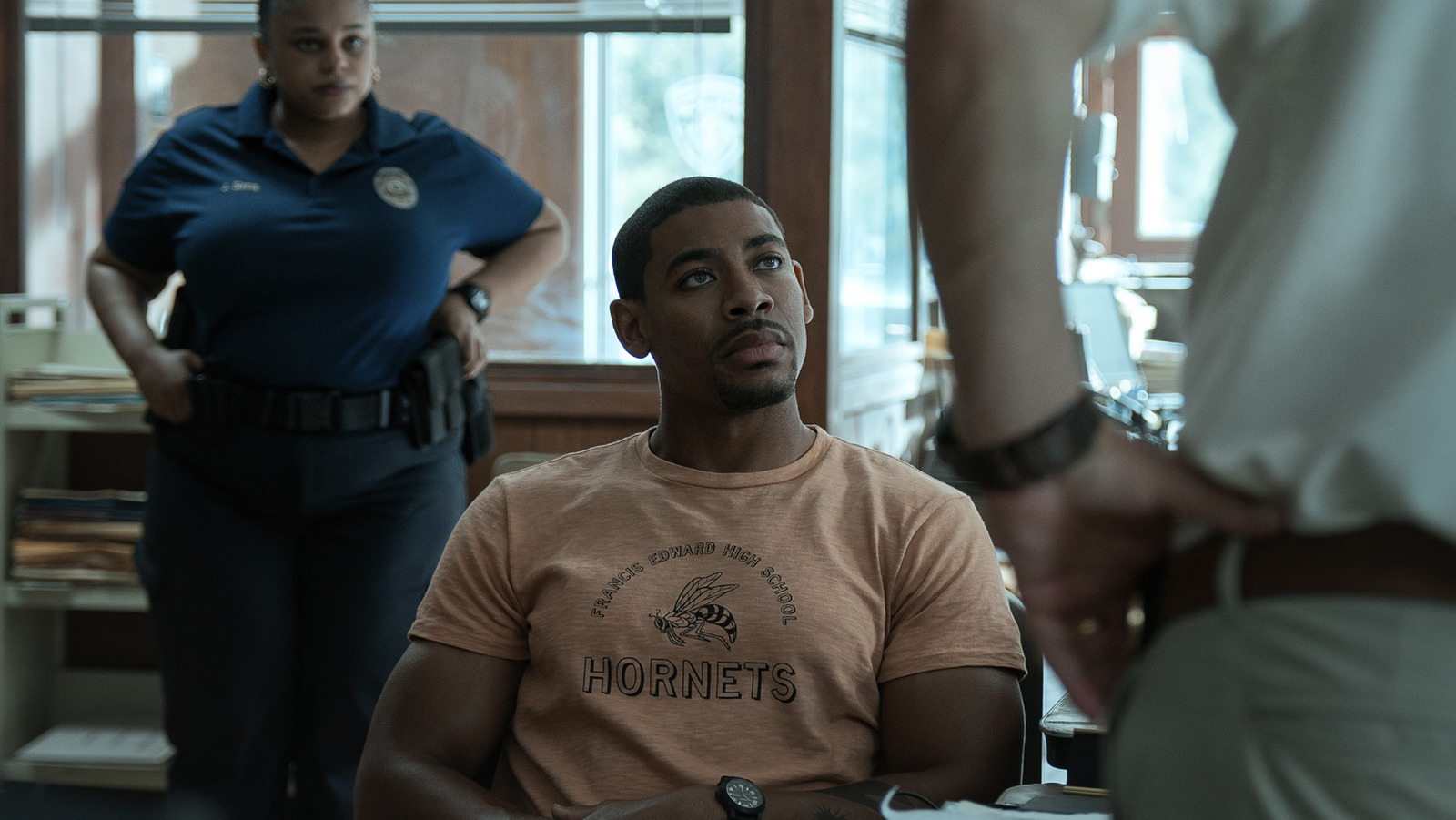
There’s also this really wonderful feeling that I’m having trouble articulating, but especially as the characters go down into the catacombs, I got the sense as a viewer of almost watching something novelistic. It just felt like this classic story that’s always existed. I don’t know if that is something that you’re going for as a writer, or if you know what I’m even talking about when I say it almost feels literary in a way. So can you just talk me through if that was a purposeful choice, or if that kind of cerebral nonsense is even something you’re thinking about when you’re writing a movie?
I don’t. I don’t think about it. I just try to stay true. But I’ll take that, though. I’ll take that. There is a lot of dialogue and I wanted to complement that dialogue with sort of setpieces. And so that catacomb sequence is a very visual, sort of flashlight-lit, exploration. And of course there’s themes here. I mean, the basement there of the courthouse, that’s the old Confederate courthouse and the history there, and as we scouted locations, that’s something I became familiar with, is these old courthouses and the history there. It gives you pause, and there’s a certain amount of reverence in those. That’s actually probably the most, as far as an actual theme that resonates, we touch on that and that was sensitive to everyone involved on set.
But as far as the literary nature of it all, I definitely had fun with dialogue and I used it to not just hear my words spoken on set. I f***ing hate dialogue. So I was surprised, but it was natural to the environment. I mean, Terry is a fish out of water. He’s struggling, he’s trying to abide by the rules, stay on the rails, and find out what the f*** is happening to him, and he has to interface verbally. So all these dialogue scenes I think are warranted. But I wanted to supercharge the dialogue.
So in some scenes, I think there’s catharsis and there’s these exploding moments of rage and action, but what’s surprising is how much fun I had and how much I got as a viewer out of just dialogue scenes where there’s some witty back and forths or just some tension that’s mounting and to deprive the audience of information and have them sort of be witness to this pressure cooker. It’s really a lot of fun.
Yeah, it’s fantastic. One thing that I’ve heard filmmakers say is that they “find the movie” while editing it, and as they’re putting it together, the movie kind of tells them what shape it wants to take and what it wants be. This is your first time being credited as an editor on a movie, so I was wondering what you learned about the movie during the editing process that maybe you didn’t anticipate in earlier stages of making it.
That’s certainly fun. I, as the writer, director, editor, I mean, I certainly had a plan, and this is a bigger footprint for me as far as the production, the size, the cameras, we had lots of cameras rolling and wanted to get it right, but I, as an editor, just fell back to my original intention, that of my collaborators, my cinematographer. I actually took great pains to infuse simplicity in the edit and make it seem, as it was, very designed and to ignore B and C camera if I had it. They’re there for insurance, they’re great operators, we’re all doing great work, but for shot design and sequencing, there had to be a reason for every single camera move, for every choice in the edit room, and that was very important.
Now, finding the alchemy is more technical for me. It’s very mathematical. So again, I know intimately all the lines and the beats, and we shot it, right? So I’m not reinterpreting it or finding it, but I am allowing myself to be surprised, and the process — you’ve got to pick the second best take that goes with this take, and all of a sudden the alchemy is that’s the best version. But having that, after so much tumult of production — I mean, when you’re out there in Louisiana and it’s 128 degrees with the heat index and you’re sitting there with gorgeous raking sunlight, but you can’t shoot because five miles away there’s a lightning storm, it’s unnerving. But you’re facing the elements. You have no control.
In the edit room, you do have control and I found joy there. I found, as a filmmaker, when you find things that work or you create something that didn’t fully exist on set and you’re giving your actors the best possible platform and you’re protecting your crew and yourself by only using the very best — it could be take two or take 12, but I would sometimes be alone above my garage editing with my Avid system and just vocally just hooting and hollering joy about finding these moments. When Don Johnson just nails that line, it is the best part of the process now for me.







